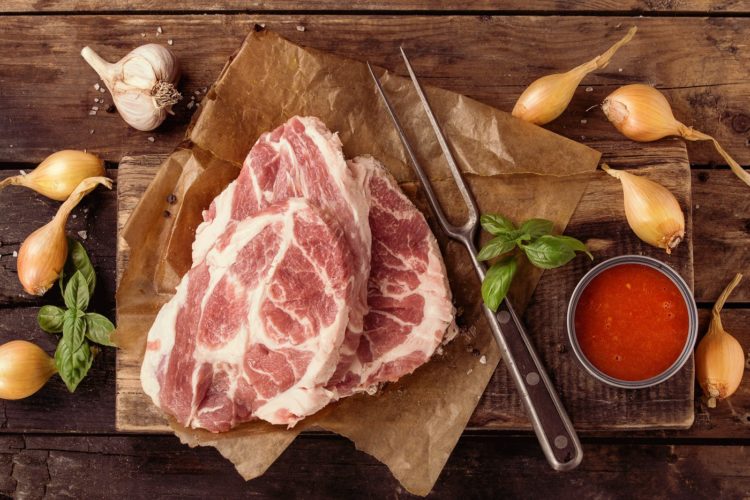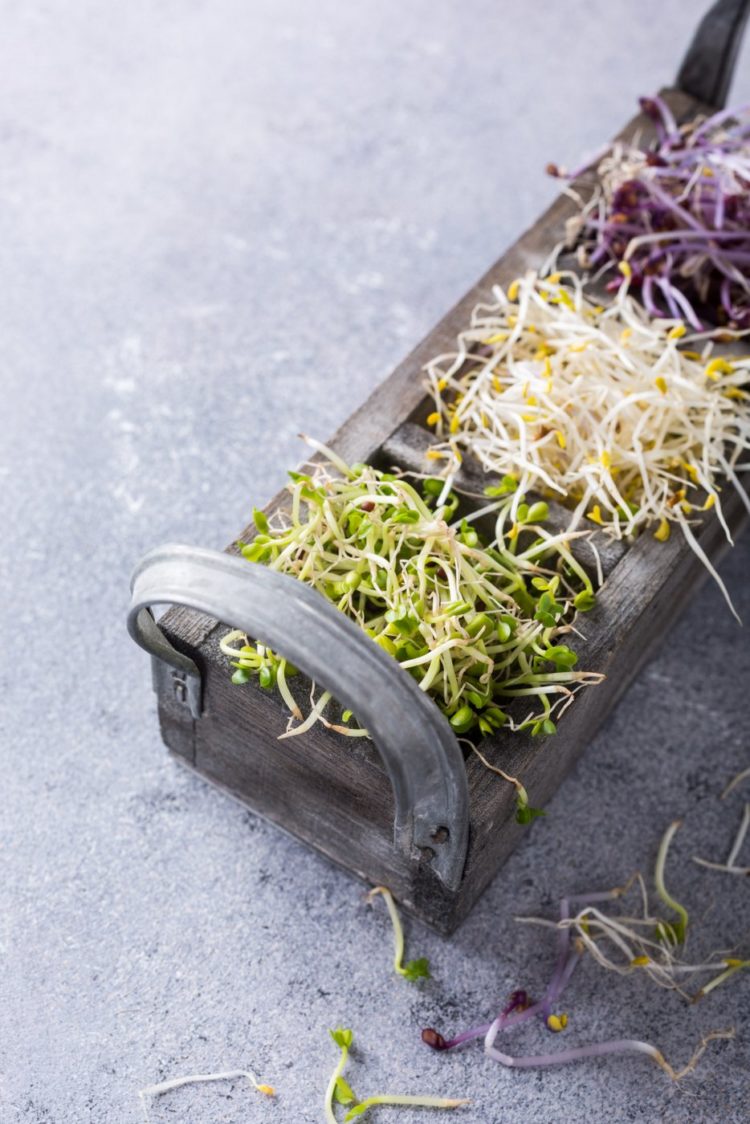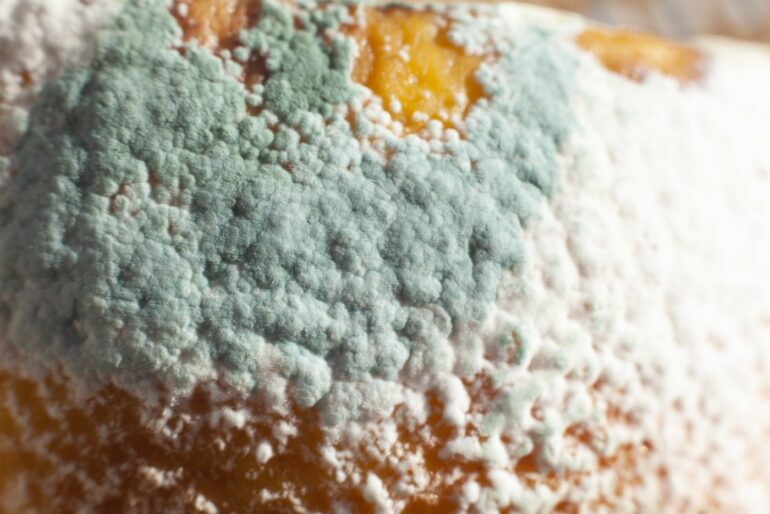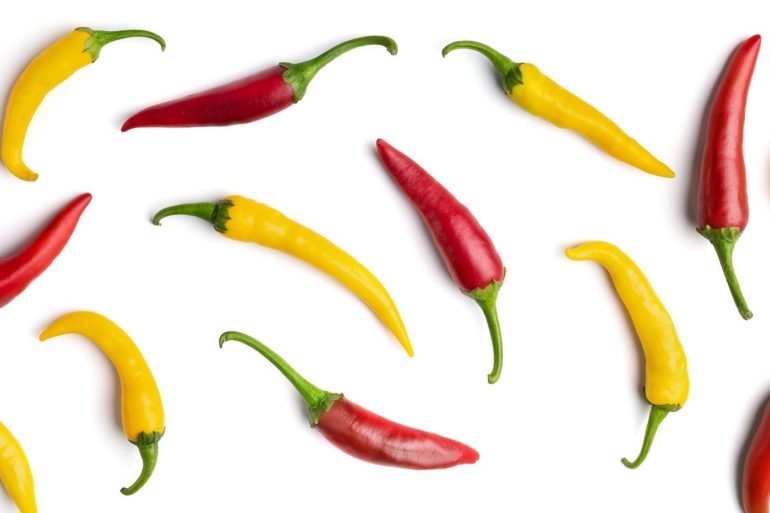How can you figure out what gave you food poisoning?
If something has made you really sick, your first thought is probably that it was something you ate.
How can you track down the cause of food poisoning?
I won’t have what she’s having
Just spent the last six hours sleeping while draped over the toilet? My condolences. We’ve all been there, and it’s certainly neither pleasant nor fun.
So now that you’ve finished dialing Ralph on the porcelain phone, you’re shaky, tired, annoyed… and trying to figure out what the heck just happened.
The most common causes of food poisoning
According to the CDC, some foods are more associated with foodborne illnesses and food poisoning than others — and this is that list.
- Chicken, beef, pork and turkey
- Fruits and vegetables
- Raw milk (and products made from it)
- Raw eggs
- Seafood (including fish) and raw shellfish
- Sprouts
- Raw (regular uncooked) flour
See more information on all of these products at the end of this post.
ALSO SEE: What is freezer burn?
Food poisoning causes: What are your symptoms?
First, let’s cover some basics. Did you, in fact, have the characteristic symptoms of food poisoning? They can, of course, vary depending on what nasty little bug caused the problem in the first place, but according to the Mayo Clinic, most manifest themselves with…
- Nausea
- Vomiting
- Watery diarrhea
- Abdominal pain
- Stomach cramps
- Loss of appetite
- Fatigue
- Fever
Additonally, if your vomiting continues for more than two days, you begin vomiting blood, you can’t keep liquids down after 24 hours, have severe diarrhea for more than three days, run a fever of 101.5 F or higher, or are severely dehydrated, seek medical attention immediately. Right now. Stop reading this and go.

What made you sick?
Okay, so you spun the wheel of symptoms and came up a winner. Loser. Whatever. You had food poisoning. What caused it?
Well, depending on what the specific illness you have, it could have been anything you ate in the last eight hours to two weeks.
Take a look at the chart below, adapted from information from the FDA, which details some of the most common contaminants, and the time it generally takes before the onset of symptoms.
It also lists the types of foods most commonly associated with the transmission of that bacteria. This information can often get you in the ballpark so you can figure out whether it was the raw oysters three days ago, or that hotdog you had for lunch. (Also, the FDA keeps a list of current food recalls you can check here.)
Finally, if you do suspect food poisoning, contact your local health department. By giving them your symptoms, what you ate, where you got the food, and when you became ill, you could help identify a potential outbreak — all so others don’t have to suffer through what you did. There’s your good deed for the day.
Chart: Food poisoning symptoms & causes
| Illness/bacterium | Onset | Symptoms | Duration | Sources |
|---|---|---|---|---|
| B cereus food poisoning (Bacillus cereus) | 10-16 hrs | Abdominal cramps, watery diarrhea, nausea | 24-48 hours | Meats, stews, gravies, vanilla sauce |
| Campylobacteriosis (Campylobacter jejuni) | 2-5 days | Diarrhea, cramps, fever, and vomiting; diarrhea may be bloody | 2-10 days | Raw and undercooked poultry, unpasteurized milk, contaminated water |
| Botulism (Clostridium botulinum) |
12-72 hours | Vomiting, diarrhea, blurred vision, double vision, difficulty in swallowing, muscle weakness. Can result in respiratory failure and death | Variable | Improperly canned foods, especially home-canned vegetables, fermented fish, baked potatoes in aluminum foil |
| Clostridium perfringens food poisoning |
8-16 hours | Intense abdominal cramps, watery diarrhea | Usually 24 hours | Meats, poultry, gravy, dried or precooked foods, time and/or temperature-abused foods |
| Intestinalcryptosporidiosis (Cryptosporidium) | 2-10 days | Diarrhea (usually watery), stomach cramps, upset stomach, slight fever | May be remitting and relapsing over weeks to months | Uncooked food or food contaminated by an ill food handler after cooking, contaminated drinking water |
| Cyclosporiasis (Cyclospora cayetanensis) |
1-14 days, usually at least 1 week | Diarrhea (usually watery), loss of appetite, substantial loss of weight, stomach cramps, nausea, vomiting, fatigue | May be remitting and relapsing over weeks to months | Various types of fresh produce (imported berries, lettuce, basil) |
| E coli infection (Escherichia coli) | 1-3 days | Watery diarrhea, abdominal cramps, some vomiting | 3-7 or more days | Water or food contaminated with human feces |
| Hemorrhagic colitis or E coli O157:h20 infection | 1-8 days | Severe (often bloody) diarrhea, abdominal pain and vomiting. Usually, little or no fever is present. More common in children 4 years or younger. Can lead to kidney failure. | 5-10 days | Undercooked beef (especially hamburger), unpasteurized milk and juice, raw fruits and vegetables (e.g. sprouts), and contaminated water |
| Hepatitis | 28 days average (15-50 days) | Diarrhea, dark urine, jaundice, and flu-like symptoms, i.e., fever, headache, nausea, and abdominal pain | Variable, 2 weeks-3 months | Raw produce, contaminated drinking water, uncooked foods and cooked foods that are not reheated after contact with an infected food handler; shellfish from contaminated waters |
| Listeriosis (Listeria monocytogenes) |
9-48 hrs for gastro-intestinal symptoms, 2-6 weeks for invasive disease | Fever, muscle aches, and nausea or diarrhea. Pregnant women may have mild flu-like illness, and infection can lead to premature delivery or stillbirth. The elderly or immunocompromised patients may develop bacteremia or meningitis. | Variable | Unpasteurized milk, soft cheeses made with unpasteurized milk, ready-to-eat deli meats |
| May be called viral gastroenteritis, winter diarrhea, acute non-bacterial gastroenteritis, food poisoning, and food infection (Noroviruses) | 12-48 hrs | Nausea, vomiting, abdominal cramping, diarrhea, fever, headache. Diarrhea is more prevalent in adults, vomiting more common in children. | 12-60 hrs | Raw produce, contaminated drinking water, uncooked foods and cooked foods that are not reheated after contact with an infected food handler; shellfish from contaminated waters |
| Salmonellosis (Salmonella) | 6-48 hours | Diarrhea, fever, abdominal cramps, vomiting | 4-7 days | Eggs, poultry, meat, unpateurized milk or juice, cheese, contaminated raw fruits and vegetables |
| Shigellosis or Bacillary dysentery (Shigella) | 4-7 days | Abdominal cramps, fever, and diarrhea. Stools may contain blood and mucus. | 24-48 hrs | Raw produce, contaminated drinking water, uncooked foods and cooked foods that are not reheated after contact with an infected food handler |
| Staphylococcal food poisoning (Staphylococcus aureus) | 1-6 hours | Sudden onset of severe nausea and vomiting. Abdominal cramps. Diarrhea and fever may be present. | 24-48 hours | Unrefrigerated or improperly refrigerated meats, potato and egg salads, cream pastries |
| V parahaemolyticus infection (Vibrio parahaemolyticus) |
4-96 hours | Watery (occasionally bloody) diarrhea, abdominal cramps, nausea, vomiting, fever | 2-5 days | Undercooked or raw seafood, such as shellfish |
| V vulnificus infection (Vibrio vulnificus) | 1-7 days | Vomiting, diarrhea, abdominal pain, bloodborne infection. Fever, bleeding within the skin, ulcers requiring surgical removal. Can be fatal to persons with liver disease or weakened immune systems. | 2-8 days | Undercooked or raw seafood, such as shellfish (especially oysters) |
A closer look at common sources of food poisoning
The problem with sprouts
The warm, humid conditions needed to grow sprouts are also ideal for germs to grow. Eating raw or lightly cooked sprouts, such as alfalfa, bean, or any other sprout may lead to food poisoning from Salmonella, E. coli, or Listeria.
While certain foods are more likely to make you sick, any food can get contaminated in the field, during processing, or during other stages in the food production chain, including through cross-contamination with raw meat in kitchens.

How meats can cause food poisoning
Raw and undercooked meat and poultry can make you sick. Most raw poultry contains Campylobacter. It also may contain Salmonella, Clostridium perfringens, and other bacteria. Raw meat may contain Salmonella, E. coli, Yersinia, and other bacteria.
You should not wash raw poultry or meat before cooking it, even though some older recipes may call for this step. Washing raw poultry or meat can spread bacteria to other foods, utensils, and surfaces, and does not prevent illness.
Use a cooking thermometer to check the temperature. You can’t tell if meat is properly cooked by looking at its color or juices.
Leftovers should be refrigerated at 40°F or colder within 2 hours after preparation. Large cuts of meat, such as roasts or a whole turkey, should be divided into small quantities for refrigeration so they’ll cool quickly enough to prevent bacteria from growing.
The problem with oysters
Raw or undercooked oysters can contain Vibrio bacteria, which can lead to an infection called vibriosis. Oysters and other filter-feeding shellfish can contain viruses and bacteria that can cause illness or death, while oysters harvested from contaminated waters can contain norovirus. To avoid food poisoning, Cook seafood to 145°F, and heat leftover seafood to 165°F.
Food poisoning from fruits and vegetables
Smetimes raw fruits and vegetables may cause food poisoning from Salmonella, E. coli and Listeria.
The safest fruits and vegetables are cooked; the next safest are washed. Avoid unwashed fresh produce, since fresh fruits and vegetables can be contaminated anywhere along the journey from farm to table, including by cross-contamination in the kitchen.
Food poisoning from raw eggs
Eggs can contain Salmonella bacteria, even if the egg looks clean and uncracked. Use pasteurized eggs and egg products when preparing recipes that call for raw or undercooked eggs.
In addition: Avoid foods that contain raw or undercooked eggs, such as homemade Caesar salad dressing and eggnog. Cook foods containing eggs thoroughly, and cook eggs until the yolks and whites are firm.

How raw flour can be a problem
Flour is typically a raw agricultural product that hasn’t been treated to kill germs. Ferms can contaminate grain while it’s still in the field or at other steps as flour is produced, and can be a problem for you when you pick up a bag of flour from the grocery store.
Bacteria are killed when food made with flour is cooked, which is why you should never taste raw dough or batter.
The problem with raw milk
You can get very sick from raw (unpasteurized) milk and products made with it, including soft cheeses (such as queso fresco, blue-veined, feta, brie and camembert), ice cream, and yogurt.
Raw milk can carry harmful germs, including Campylobacter, Cryptosporidium, E. coli, Listeria, and Salmonella. Raw milk is made safe through pasteurization, which requires just enough heat for just long enough to kill disease-causing germs.







